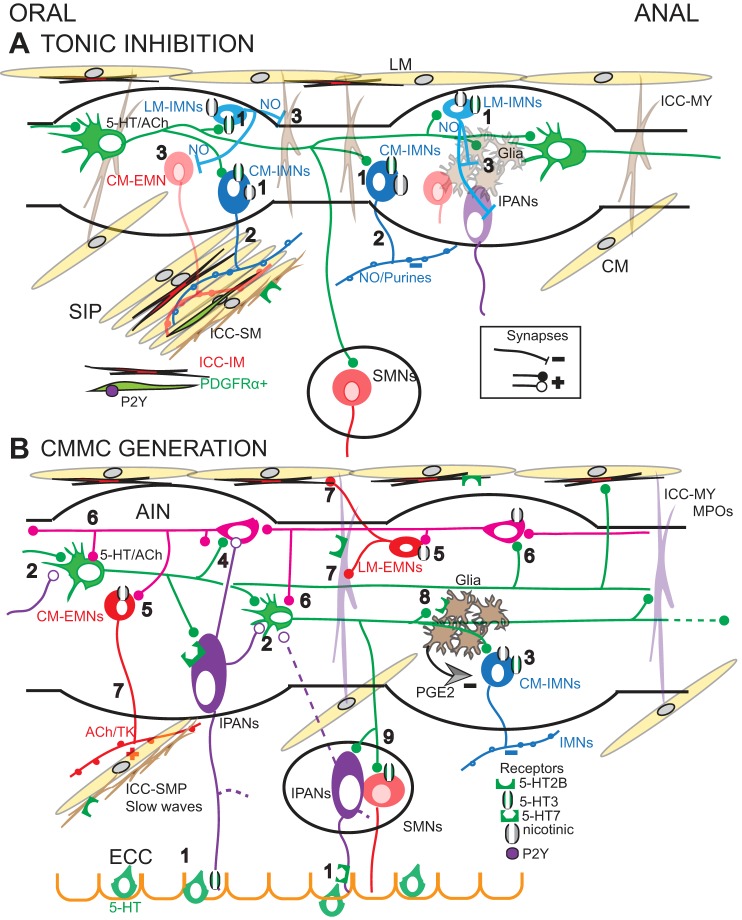Fig. 6.
Neural circuit involved in colonic motor patterns. A: tonic inhibition. 1) 5-HT neurons (green) activate 5-HT3 and nicotinic receptors on myenteric IMNs to the longitudinal (LM) and circular muscle (CM). 2) CM-IMNs release nitric oxide (NO) and purines that activate the SIP syncytium [CM, intramuscular interstitial cells of Cajal (ICC-IM), and platelet-derived growth factor-receptor α-positive (PDGFRα+) cells]. 3) NO, perhaps released from LM-IMNs inhibit EMNs, ICC-MY, glial cells, and IPANs [note submucosal neurons (SMNs)] B: CMMC generation. 1) Mucosal release from enterochromaffin (EC) cells activates the mucosal endings of myenteric and submucosal IPANS via 5-HT3 and 5-HT7 receptors, respectively. 2) IPANs synapse with and synchronize 5-HT neurons via 5-HT7 receptors. 3) IMNs are strongly activated just prior to the CMMC, and which are necessary for its oral-to-anal propagation. 4) IPANs and 5-HT interneurons likely activate ascending interneurons (AINs). 5) AINs excite excitatory motor neurons (EMNs) to produce the CMMC contraction. 6) AINs also likely synapse with 5-HT neurons and vice versa. 7) EMNs excite the LM and CM, ICC-MY, and ICC-SMP. 8) Synchronized 5-HT neurons activate glial cells via 5-HT2B receptors that release PGE2 to inhibit IMNs, thereby disinhibiting cell types inhibited by NO. 9) During the CMMC, 5-HT neurons activate SMNs.

